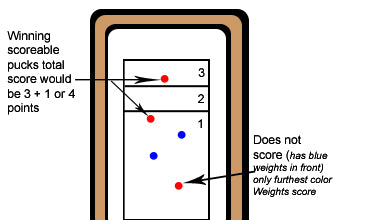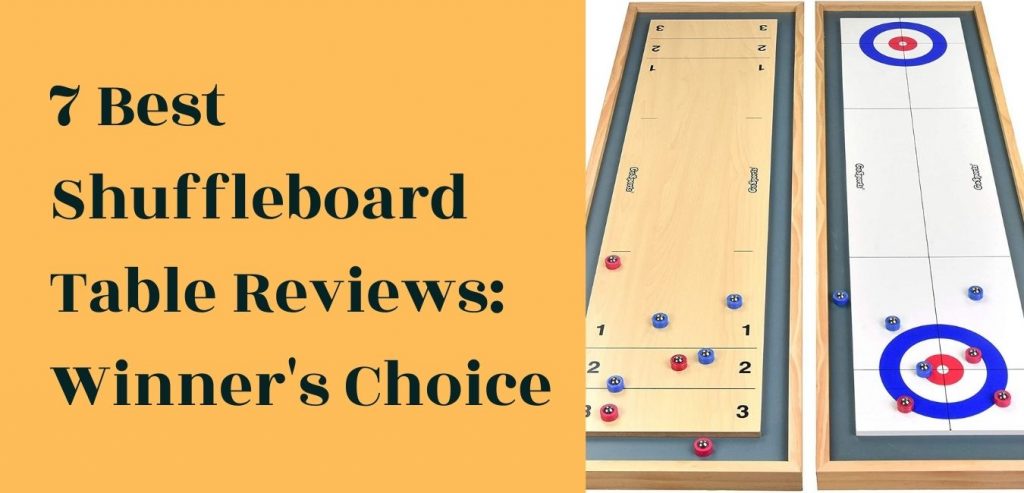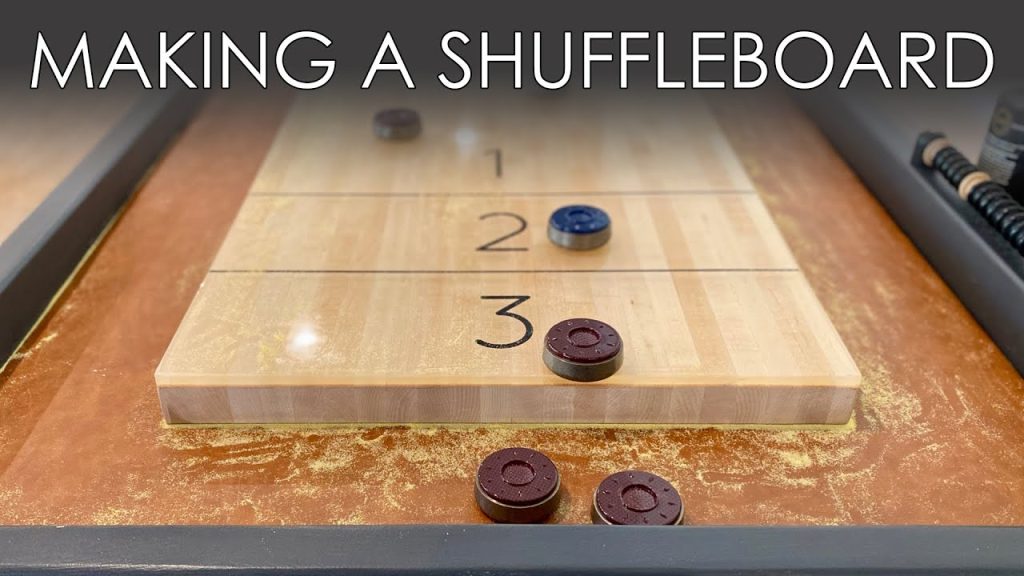To score in shuffleboard, players need to understand the basic rules. Points are earned by sliding pucks into specific zones on the board.
Shuffleboard is a fun and competitive game enjoyed by many. Scoring might seem tricky at first, but it’s simple once you grasp the basics. Knowing how to score correctly is key to enjoying the game fully. Whether you’re new to shuffleboard or looking to improve your skills, understanding the scoring system is essential.
This guide will walk you through the steps to score shuffleboard like a pro. Let’s dive into the essentials and make scoring in shuffleboard easy and fun.
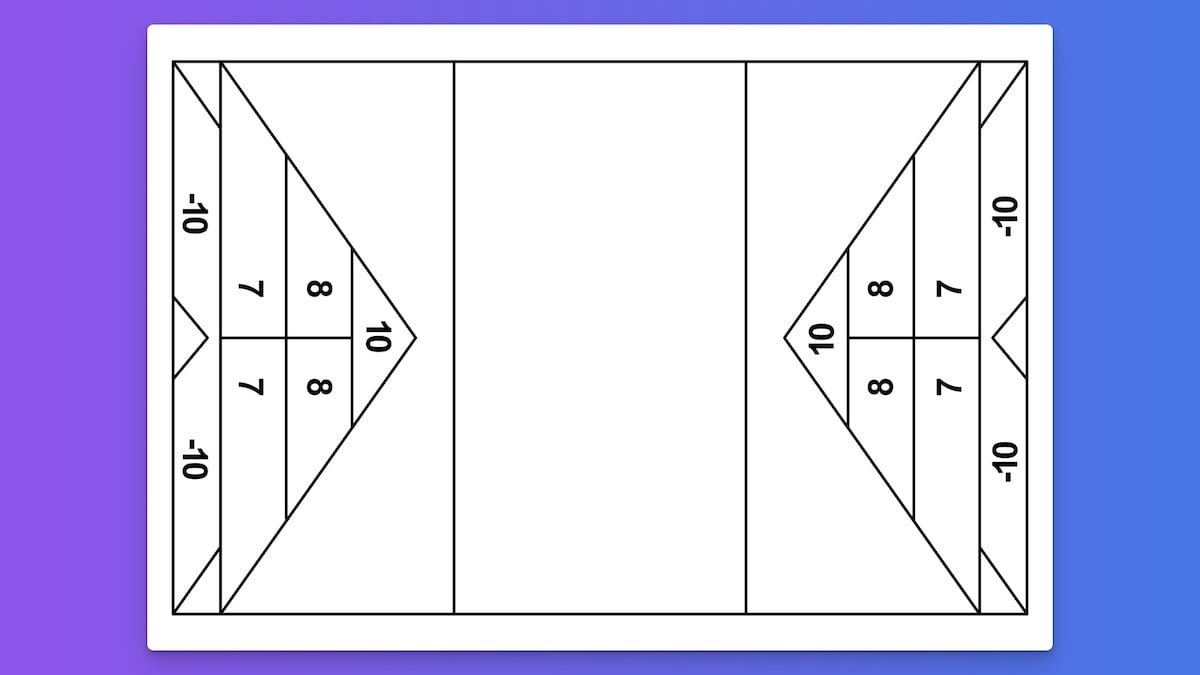
Credit: keepthescore.com
Introduction To Shuffleboard Scoring
Shuffleboard is a fun and engaging game enjoyed by people of all ages. Understanding how to score in shuffleboard is crucial for a fair and enjoyable game. Learning the scoring rules can improve your gameplay and make the experience more rewarding.
Importance Of Accurate Scoring
Accurate scoring keeps the game fair and enjoyable for everyone. It ensures that the correct player or team wins. Misunderstanding the scoring system can lead to disputes. Keeping track of scores correctly is essential for a smooth game.
Basic Rules Of Shuffleboard
The basic rules of shuffleboard are easy to learn. Each player or team takes turns sliding pucks down a long, smooth table. The goal is to have your pucks land in the highest-scoring areas. Points are awarded based on where the pucks land.
Pucks touching the line between two sections score the lower value. Pucks that fall off the table or fail to reach the scoring area do not score any points. The player or team with the highest score after all rounds wins the game.
Essential Equipment
Understanding how to score shuffleboard is crucial for enjoying the game. To get started, you need the right equipment. Essential equipment ensures the game runs smoothly and fairly.
Shuffleboard Table
The shuffleboard table is the game’s most important element. Tables come in various sizes, usually between 9 to 22 feet long. The playing surface must be smooth for the pucks to glide easily. Wooden tables are common, often made from maple or birch. Some tables have polymer coating to protect the wood and provide a slick surface. The table has scoring zones marked at each end, helping players keep track of their points.
Pucks And Weights
Pucks, also known as weights, are small discs used to play shuffleboard. They come in sets of eight, with four pucks in two different colors. This helps differentiate between the two players or teams. Weights are made of metal and have a plastic or rubber coating to protect the table surface. Each puck must be the same size and weight to ensure fair play. Cleaning the pucks regularly keeps them in top condition and allows for a smooth glide across the table.
Setting Up The Game
Setting up a shuffleboard game correctly ensures a fair and enjoyable experience for all players. Proper preparation of the table and accurate positioning of the pucks are crucial steps. Let’s dive into the details to get your game started on the right foot.
Table Preparation
First, ensure the shuffleboard table is clean. Dust and debris can affect puck movement. Use a soft cloth to wipe the surface gently.
Next, sprinkle shuffleboard wax evenly across the table. This wax reduces friction and allows the pucks to glide smoothly. Use the following steps:
- Open the wax container carefully.
- Sprinkle the wax lightly and evenly over the table.
- Use a brush to spread the wax if needed.
Ensure the table is level. An uneven table can cause pucks to veer off course. Use a leveling tool for accuracy.
Positioning The Pucks
Each player or team receives four pucks. These pucks are usually color-coded for easy identification. Place the pucks at the designated starting area on each end of the table.
Follow these steps to position the pucks correctly:
- Stand at one end of the table.
- Arrange the pucks in a straight line.
- Ensure each puck is touching the edge of the table.
Now, players are ready to take turns sliding their pucks towards the opposite end. The goal is to land the pucks in the scoring zones.
Remember, a well-prepared table and properly positioned pucks can make the game more enjoyable. Happy playing!
Scoring Zones Explained
Shuffleboard is a fun and strategic game. Understanding the scoring zones is key to playing well. This section will guide you through the scoring zones and their point values.
Understanding The Zones
Shuffleboard tables have distinct scoring zones. These zones help determine the points scored.
- Zone 1: This is the furthest zone from the starting point.
- Zone 2: The next zone closer to the starting point.
- Zone 3: Even closer to the starting point.
- Zone 4: Closest to the starting point, often the highest scoring zone.
Each zone has a specific point value. Let’s look at these values next.
Point Values
Each scoring zone has its own point value. Here is a breakdown:
| Scoring Zone | Point Value |
|---|---|
| Zone 1 | 1 Point |
| Zone 2 | 2 Points |
| Zone 3 | 3 Points |
| Zone 4 | 4 Points |
Zone 4 often has the highest value. Aim for this zone to score more points.
Remember, the key to winning is accuracy and strategic play. Now you know the scoring zones and their values, you can score better in shuffleboard.
Techniques For Accurate Scoring
Accurate scoring in shuffleboard is key to enjoying the game. It keeps the game fair and fun. There are different methods to score accurately. Knowing these can help you play better. Here are some techniques that will improve your scoring skills.
Using A Scoreboard
A scoreboard is a handy tool. It shows the score for both teams. You can use a chalkboard, whiteboard, or digital board. Mark each player’s score after every round. This helps keep track of points easily. A visible scoreboard also avoids confusion. Everyone can see the current scores clearly.
Manual Scoring Tips
Manual scoring is simple. Count the points at the end of each round. Check where the pucks land on the scoring zones. The closest puck to the edge gets higher points. Add up the points for each player. Write down the scores on paper if needed. This keeps the score accurate and fair.
Practice these techniques to become a better scorer. Accurate scoring makes the game more enjoyable for everyone. Keep your focus, and you will get better with time.

Credit: shuffleboardcity.com
Common Scoring Mistakes
Scoring in shuffleboard can seem simple. But many players make common mistakes. These errors can change the outcome of a game. Let’s discuss two main mistakes: Incorrect Puck Placement and Misreading the Zones.
Incorrect Puck Placement
The position of the puck is crucial. It must be in the scoring zone. Pucks that touch the line between zones can confuse players. Make sure the puck is fully inside a zone.
Check the puck from above. It should be clear which zone it is in. If unsure, use a straightedge tool. This ensures accurate placement. Incorrect placement can lead to disputes. Always double-check before scoring.
Misreading The Zones
Understanding the zones is key to scoring. Each zone has a different point value. Misreading can result in wrong scores. The zones are usually marked 1, 2, and 3. Be sure to read the markings correctly.
Use a table to help remember the point values:
| Zone | Points |
|---|---|
| 1 | 1 |
| 2 | 2 |
| 3 | 3 |
Always confirm the puck’s position in the zone. Double-check the points before recording the score. Simple mistakes can make a big difference. Stay focused and avoid these common errors.
Advanced Scoring Strategies
Advanced scoring strategies in shuffleboard can elevate your gameplay. These techniques help in outsmarting opponents and maximizing your points. Learn to use blocking and strategic placement to gain an edge.
Blocking Opponents
Blocking is a key defensive strategy. Place your puck to obstruct your opponent’s path. This prevents them from scoring high points. Aim to place your puck in the middle of the table. This makes it harder for opponents to push it aside.
Consider the speed and weight of your puck. A well-placed block can force your opponent to waste their turn. They may have to knock your puck out before they can score. This gives you control of the game.
Maximizing Points
Focus on placing your pucks in high-scoring areas. Aim for the far end of the table. This is where the highest points are awarded. Practice your technique to ensure accuracy.
Use the sides of the table for bank shots. This can help you reach difficult spots. Anticipate your opponent’s moves. Place your puck to either block or score, depending on the situation. Consistent practice will improve your skills and scoring ability.
Practice Drills
To improve your shuffleboard skills, practice drills are essential. Regular practice helps in refining techniques and boosting confidence. Whether you play alone or with a team, these drills will enhance your game. Below are some effective practice drills categorized for solo and team practice.
Solo Practice
Practicing alone allows you to focus on your technique. Start with the basic shooting drill. Place pucks at different positions on the board. Aim to slide each puck into specific scoring zones. Try to hit the higher scoring areas consistently.
Another useful drill is the speed control drill. Slide the puck with varying force to understand the board’s speed. Adjust your shots based on the puck’s movement. This helps in controlling your shots during an actual game.
Finally, practice bank shots. Aim the puck at the side walls to reach the scoring zones. This drill improves your precision and angle judgment. Keep practicing until you can make accurate bank shots regularly.
Team Practice
Team practice is crucial for understanding team dynamics. Start with the communication drill. Discuss strategies and plan your shots with team members. Effective communication leads to better coordination.
Next, try the blocking drill. One player aims to block the opponent’s puck while the other tries to score. This drill enhances defensive skills and scoring techniques simultaneously.
Lastly, conduct mock games. Simulate real game scenarios with your team. This helps in understanding each other’s strengths and weaknesses. It also builds team spirit and improves overall performance.
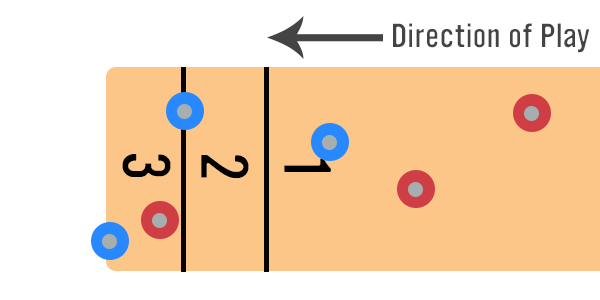
Credit: www.homeleisuredirect.com
Frequently Asked Questions
What Is The Basic Shuffleboard Scoring Rule?
Shuffleboard scoring is simple. The puck must land in a scoring zone. Points are determined by the zone number.
How Many Points To Win Shuffleboard?
The typical winning score is 15 or 21 points. However, it can vary by specific game rules.
What Happens If Pucks Tie In Shuffleboard?
If pucks tie in a scoring zone, no points are awarded. Players must break the tie in the next round.
Can Pucks Be Knocked Off In Shuffleboard?
Yes, players can knock off opponents’ pucks. This strategy is often used to reduce the opponent’s score.
Conclusion
Scoring shuffleboard is simple with the right steps. Remember to stay focused. Practice often to improve your skills. Always follow the basic rules. This ensures fair play and fun. Enjoy the game with friends and family. Shuffleboard can be a great way to bond.
Keep learning and playing. With time, you will get better. Have fun on the shuffleboard court!

